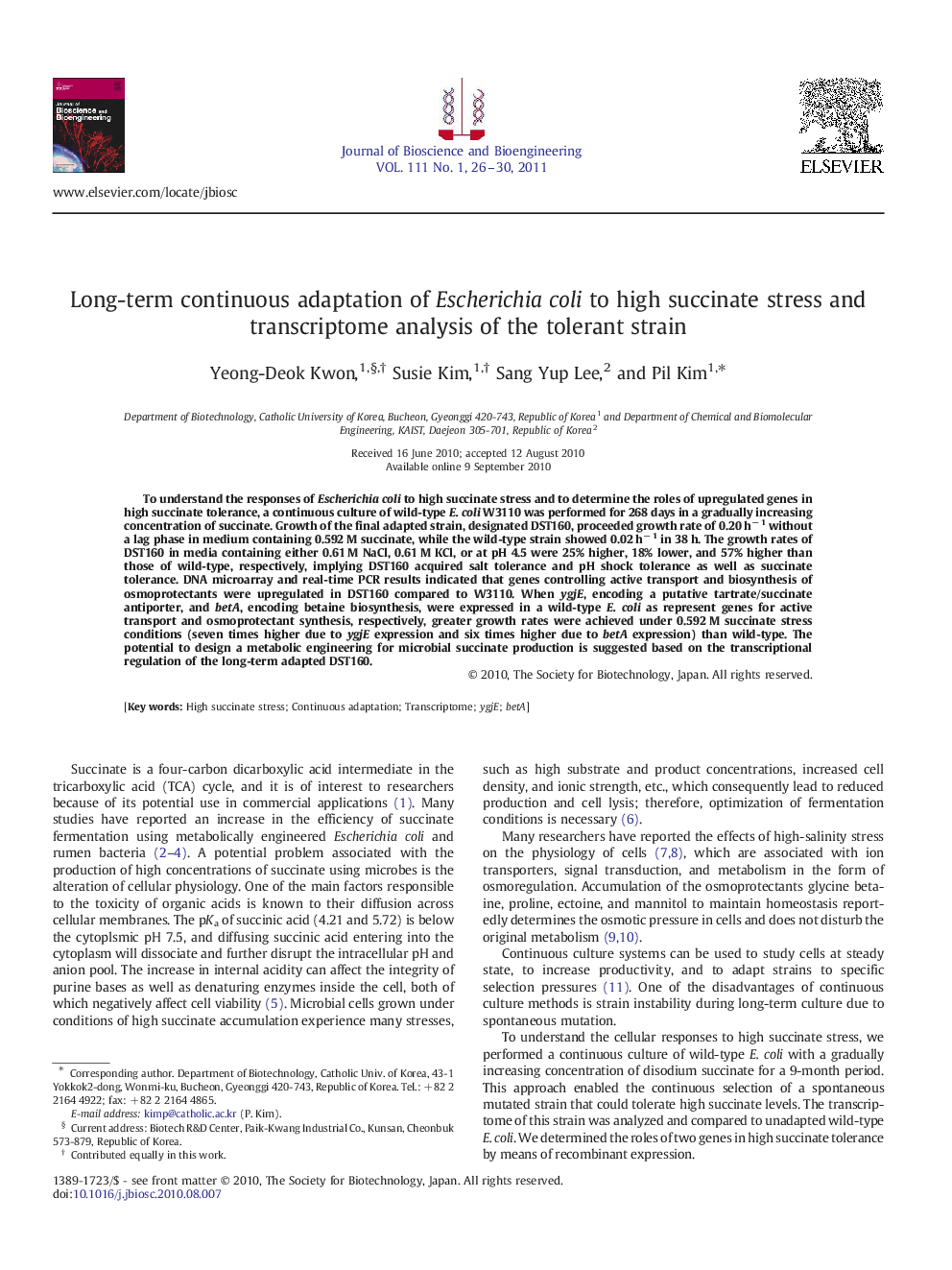| کد مقاله | کد نشریه | سال انتشار | مقاله انگلیسی | نسخه تمام متن |
|---|---|---|---|---|
| 21117 | 43207 | 2011 | 5 صفحه PDF | دانلود رایگان |

To understand the responses of Escherichia coli to high succinate stress and to determine the roles of upregulated genes in high succinate tolerance, a continuous culture of wild-type E. coli W3110 was performed for 268 days in a gradually increasing concentration of succinate. Growth of the final adapted strain, designated DST160, proceeded growth rate of 0.20 h− 1 without a lag phase in medium containing 0.592 M succinate, while the wild-type strain showed 0.02 h− 1 in 38 h. The growth rates of DST160 in media containing either 0.61 M NaCl, 0.61 M KCl, or at pH 4.5 were 25% higher, 18% lower, and 57% higher than those of wild-type, respectively, implying DST160 acquired salt tolerance and pH shock tolerance as well as succinate tolerance. DNA microarray and real-time PCR results indicated that genes controlling active transport and biosynthesis of osmoprotectants were upregulated in DST160 compared to W3110. When ygjE, encoding a putative tartrate/succinate antiporter, and betA, encoding betaine biosynthesis, were expressed in a wild-type E. coli as represent genes for active transport and osmoprotectant synthesis, respectively, greater growth rates were achieved under 0.592 M succinate stress conditions (seven times higher due to ygjE expression and six times higher due to betA expression) than wild-type. The potential to design a metabolic engineering for microbial succinate production is suggested based on the transcriptional regulation of the long-term adapted DST160.
Journal: Journal of Bioscience and Bioengineering - Volume 111, Issue 1, January 2011, Pages 26–30